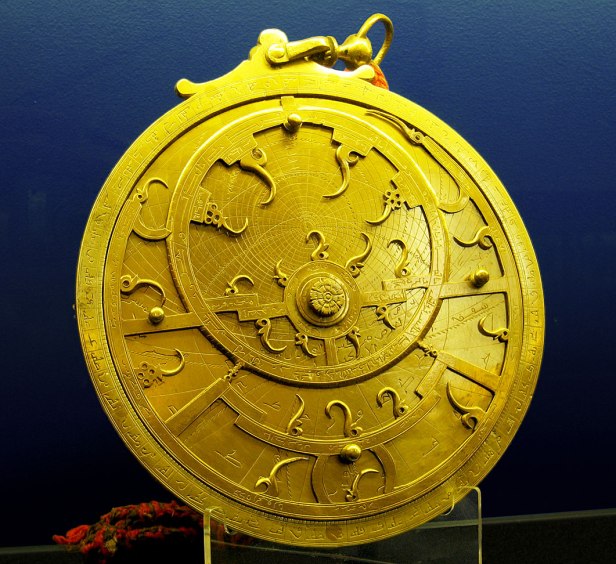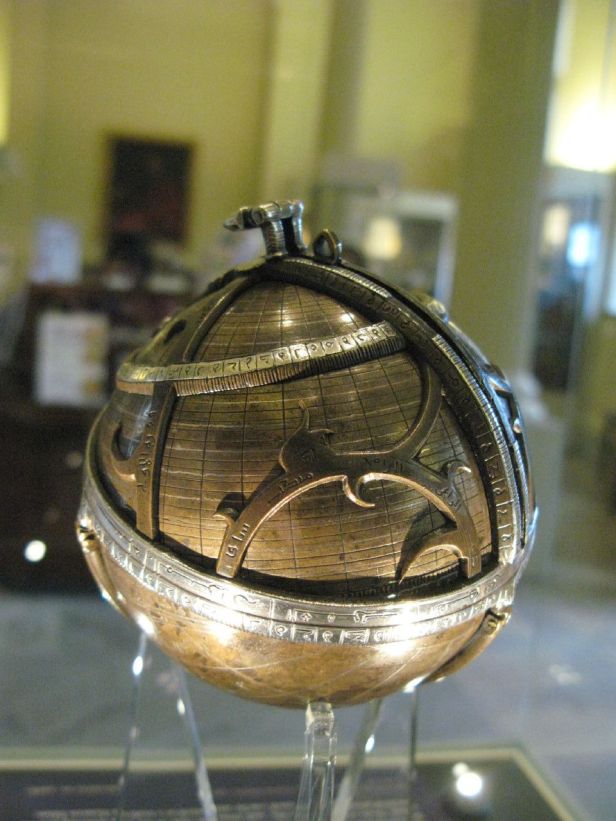So your mobile battery is dead and you want to know your location, date and time, well ancestors have lived hundreds of years without any mobile nor satellites.
A complicated round shape piece of metal was made to detect the location and time, was used by astronomer about 1000 years, by the Islamic Golden age, the Greek empire and other.
Astrolab is device made from steel plate or copper contain a with geometric chart, so you can detect, using some known stars, the time, date , latitude, celestial object degrees, rising setting of sun and other object, prayer time Qibla location for muslim in Islamic civilization, and some mathematical calculation.

The first astronomical uses is to detect the time direction and stereographic projection. the astrolabe was effectively an analog calculator capable of working out several different kinds of problems in spherical astronomy.The earliest evidence of use of the stereographic projection in a machine is in the writing of the Roman author and architect, Marcus Vitruvius Pollio (ca. 88 – ca. 26 BC), who in De architectura describes an anaphoric clock (probably a clepsydra or water clock) in Alexandria.
However in the Islamic Golden ages, the astrolabe introduced by the 10th century and radical implementation has been added. muslims astronomer introduced angular scales adding circles indicating azimuth on the horizon.
The mathematician Muhammad al-Fazari was The first person credited with building an astrolabe in the Islamic world, reportedly the 8th-century. The mathematical background was established by the Muslim astronomer Albatenius in his treatise Kitab az-Zij ( 920 AD), which was translated into Latin.

In the Islamic world, astrolabes were used to find the times of sunrise and the rising of fixed stars, to help schedule morning prayers. In the 10th century, al-Sufi first described over 1,000 different uses of an astrolabe, in areas as diverse as astronomy, astrology, navigation, surveying, prayer, Qibla, etc. Muslim astronomers also independently invented the celestial globe, which were used primarily for solving problems in celestial astronomy. Today, 126 such instruments remain worldwide, the oldest from the 11th century.
The spherical astrolabe, a variation of both the astrolabe and the armillary sphere, was invented by Islamic astronomers during the Golden age. The earliest description of the spherical astrolabe dates back to Al-Nayrizi ( 892–902).

Also first geared mechanical astrolabe was later invented by Abi Bakr of Isfahan in 1235.
However thank to astrolab we have now wristwatch, it was a influence for mechanical astronomical clocks.
having one of these you wont worry anymore about batteries.

